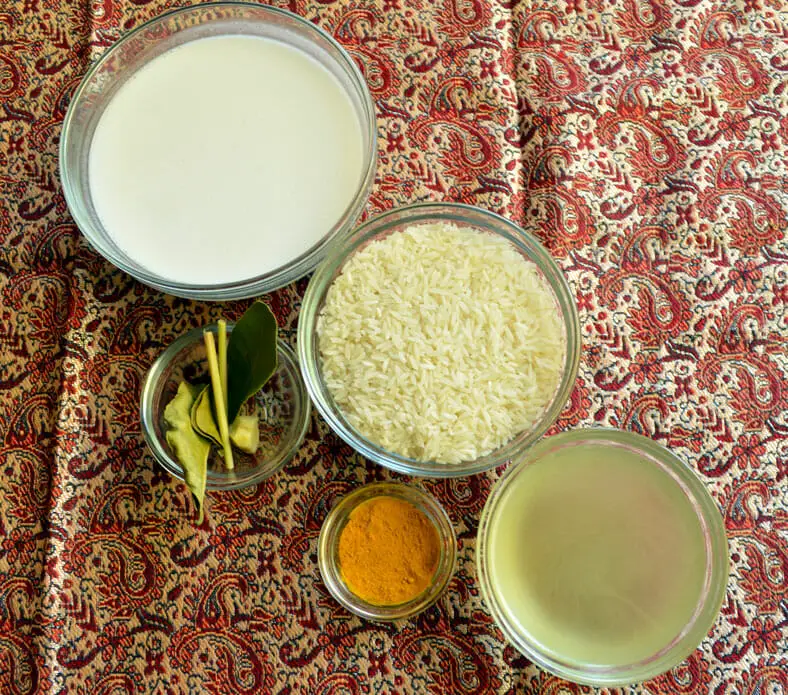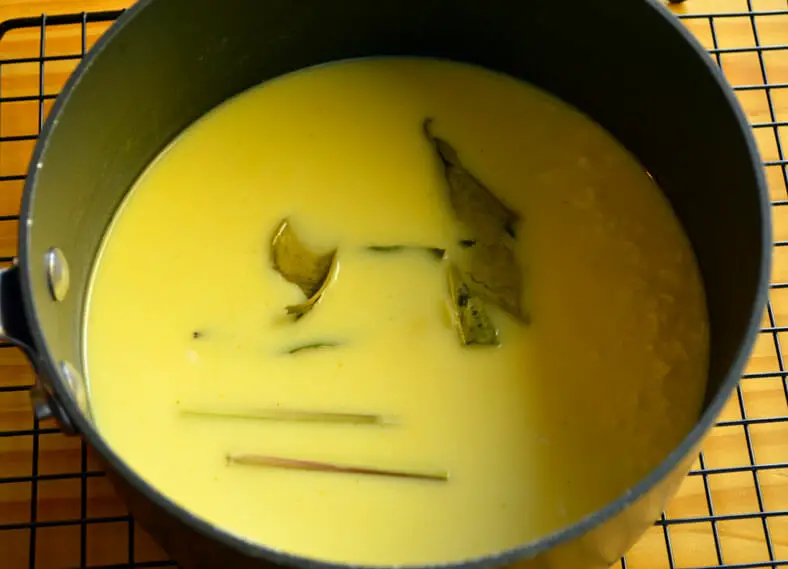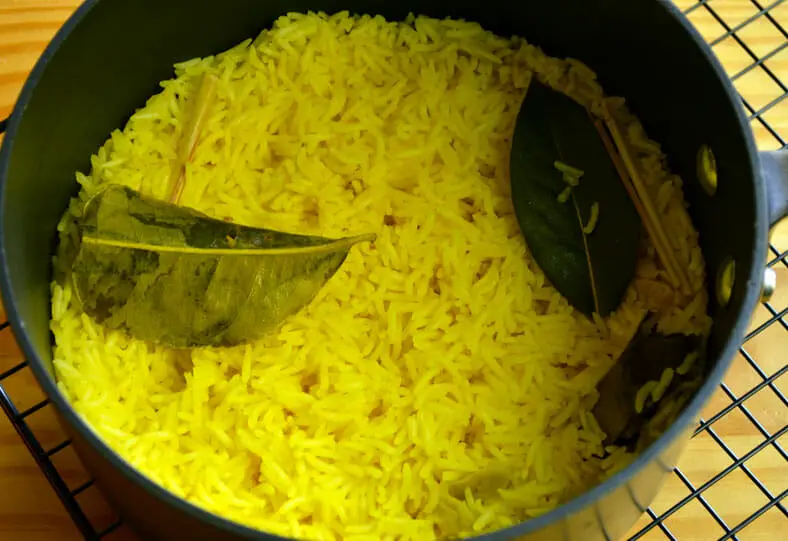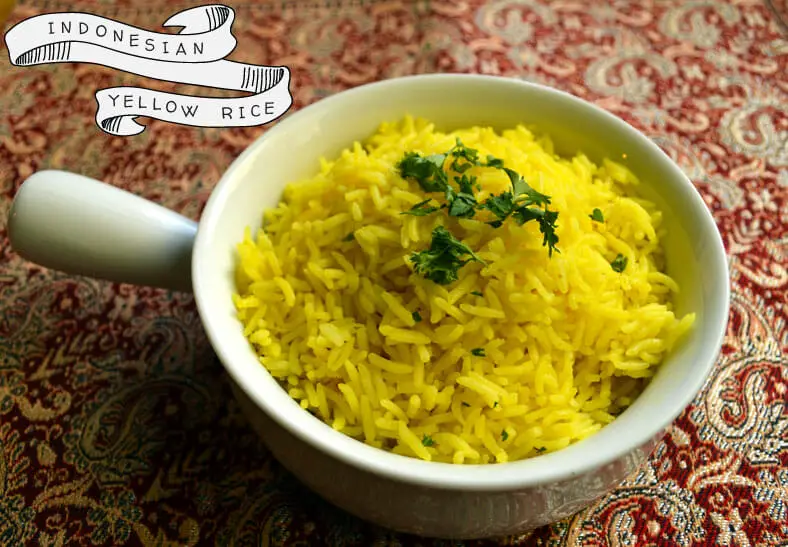Kasi Kuning is a festive rice in Indonesia cooked with coconut milk and turmeric. It is very fragrant and delicious bowl of rice that is perfectly suited to be eaten with your favorite entree.
It was this dish for nasi kuning, however, that caught our eye first as being very exquisite. And apparently for good reason, since nasi kuning is a dish often served for special occasions in Indonesian culture.
Because of the turmeric and the goldenrod color that it yields, nasi kuning is said to resemble gold and to symbolize good fortune and wealth to whom its presented, so no wonder it’s such a hit at the big events!
If you love rice make sure you also check out our other recipe for Cantonese-Peruvian fried rice.

The Coconut Milk in Nasi Kuning
What personally struck me most, however, about the dish in terms of its flavor profile and taste was the richness that stemmed from cooking with coconut milk. Now, as a half-Persian, I’ve seen some pretty interesting approaches to cooking rice, but this for me was the first time with adding coconut milk to cook the rice.
Rest assured, it certainly won’t be the last time I add coconut milk to cook rice. Each grain of the finished nasi kuning dish tasted incredibly decadent while also thoroughly coated with flavor… which I do suspect is a direct consequence of the coconut milk.
By the way, if you love coconut milk, check out our other very popular recipe for Kokoda Hawaiian coconut milk ceviche , or coconut conch soup
Plus, let’s call it an added bonus for this recipe that we can reap the tremendous health benefits of coconut milk. But that’s a topic for another day.

While the coconut milk was a fantastic addition for the rice, the nasi kuning did just as much need the other added ingredients – kaffir leaves, lemongrass, and ginger – to help balance the taste of the overall dish. Without the springy and zesty freshness that these ingredients contribute, I would suspect that rice just cooked in coconut milk would be very heavy, wholesome, and sleep-inducing.
Thankfully, it wasn’t. This nasi kuning was a perfectly balanced dish that tasted as elegantly as it looked.
A taste as special as the occasions for which it’s made, no doubt.
This rice is so flavorful and nutrient dense, I try to use it with any recipes that just calls for rice. It is such an easy way to add more nutrients and the superpowers of turmeric into my regular every meals. If you’re eating your meal with a side of white rice anyway, why not eat it with nutrient dense rice instead!
Meals that pair with rice, that goes well with this dish includes Vietnamese braised fish , marinated chicken thighs, or use this rice instead of white rice this Chinese fried rice, or this one pot jollof rice.

